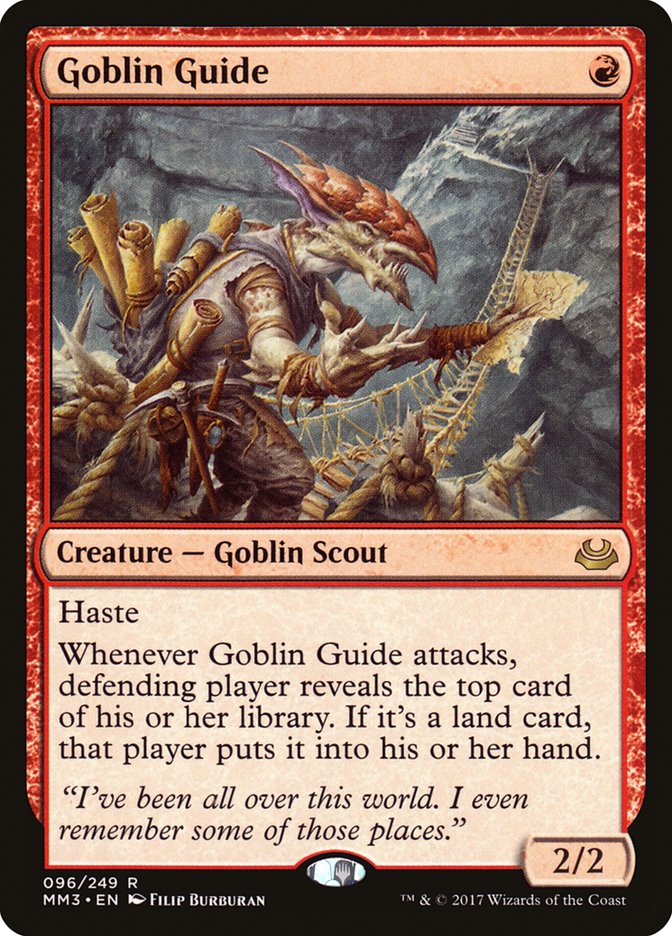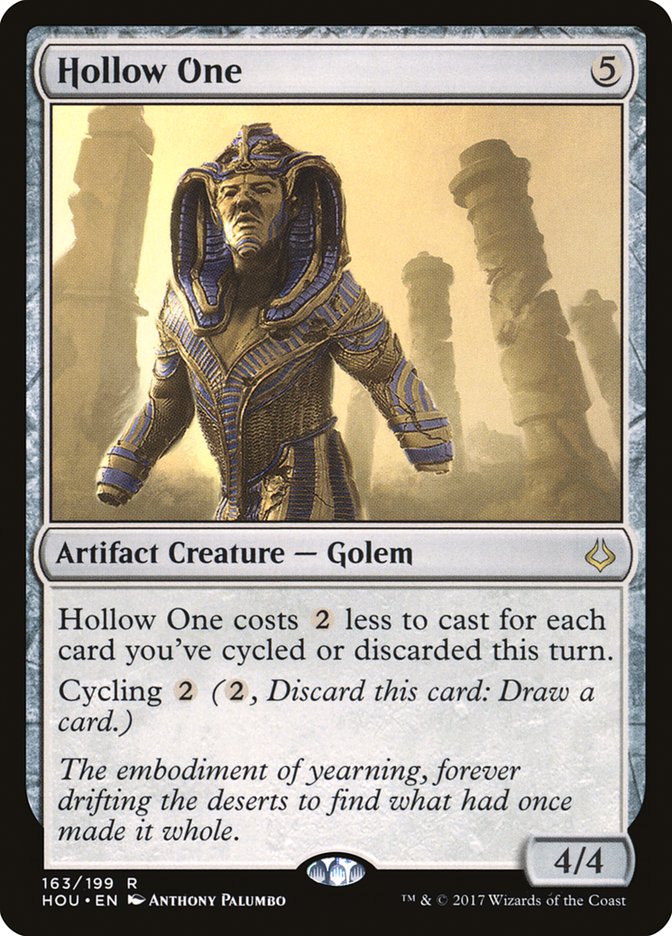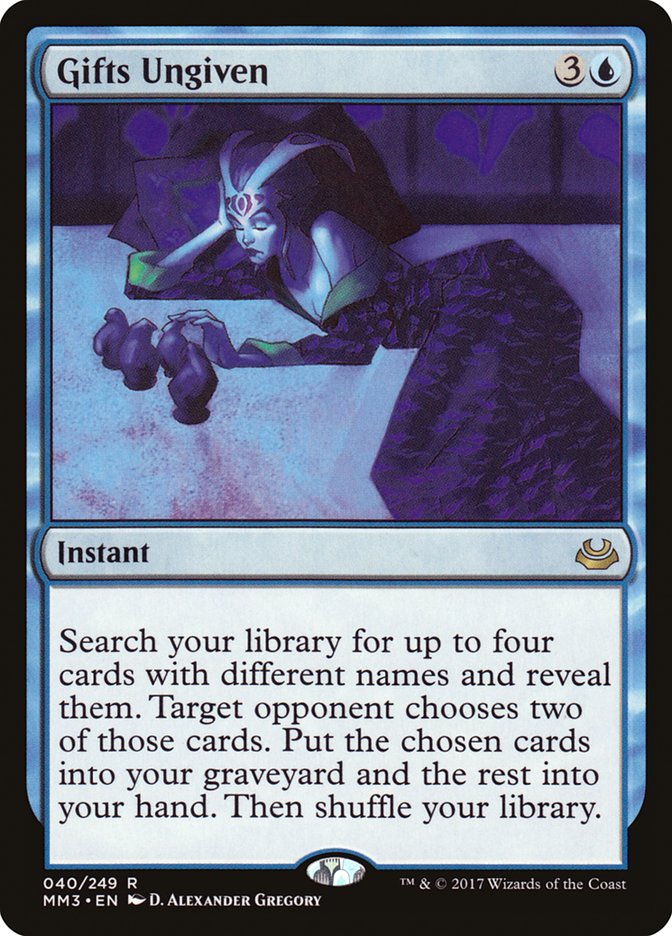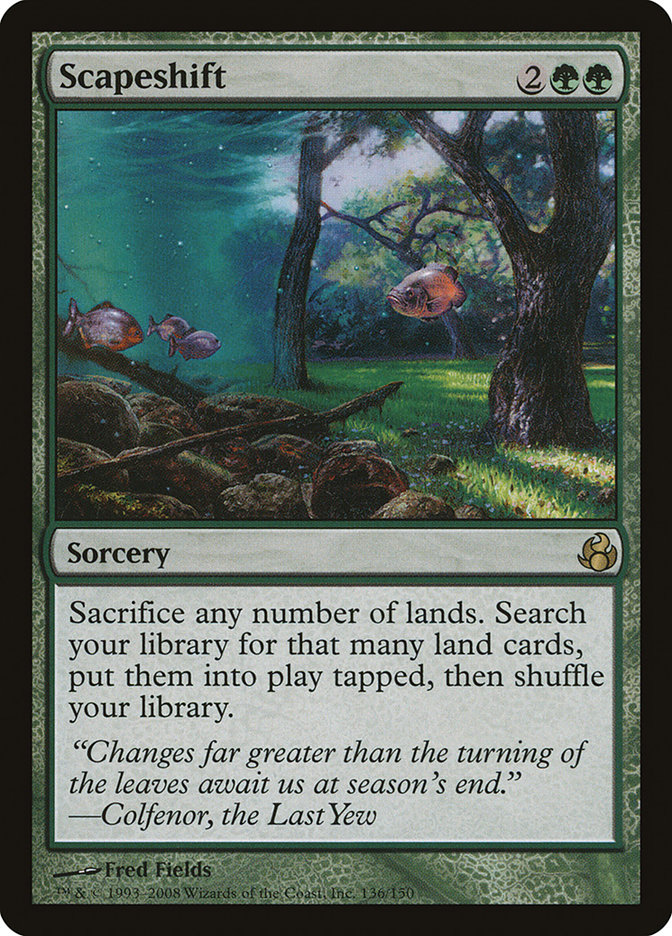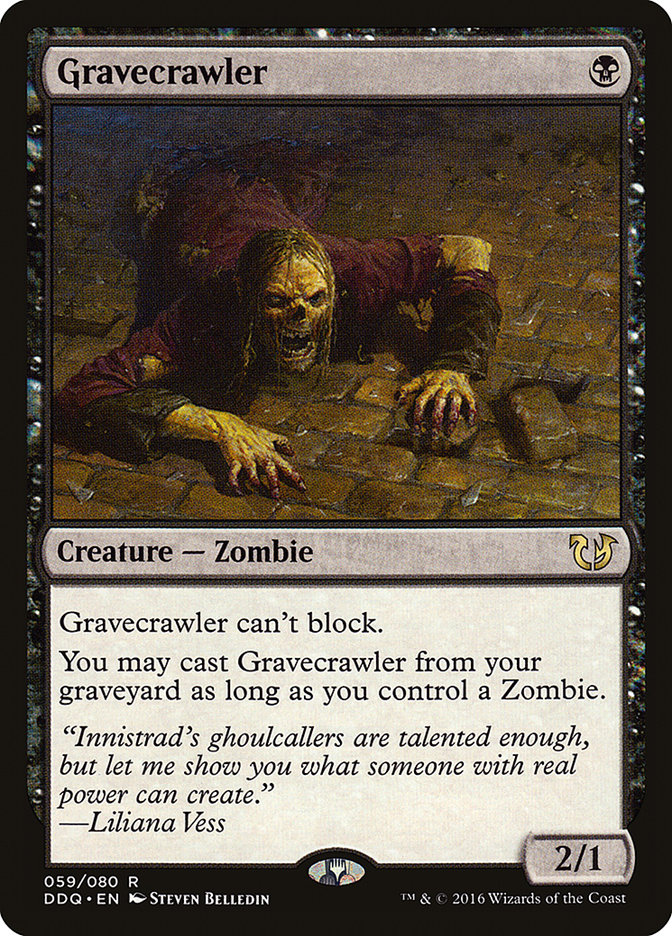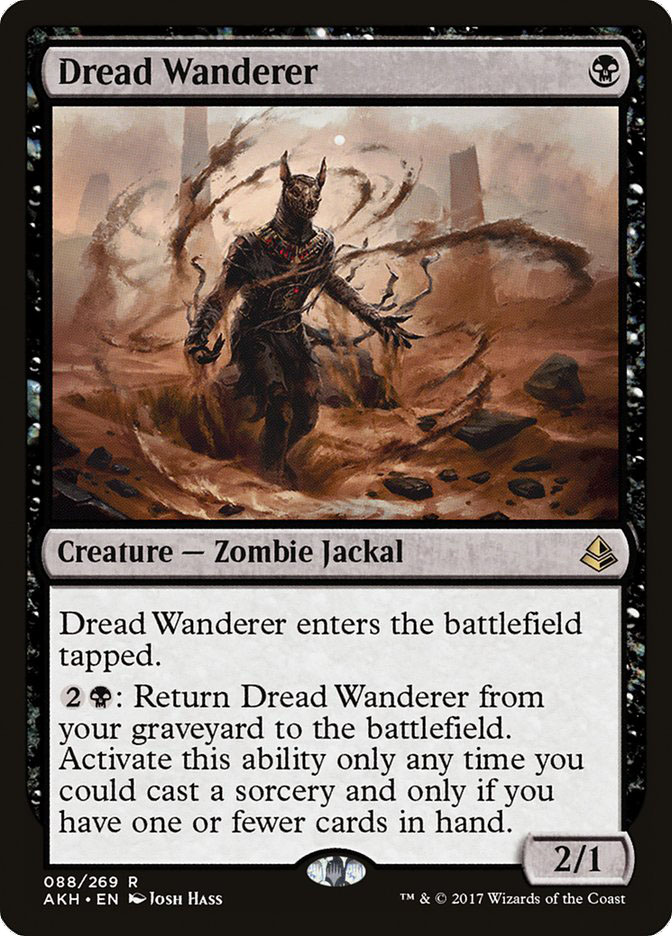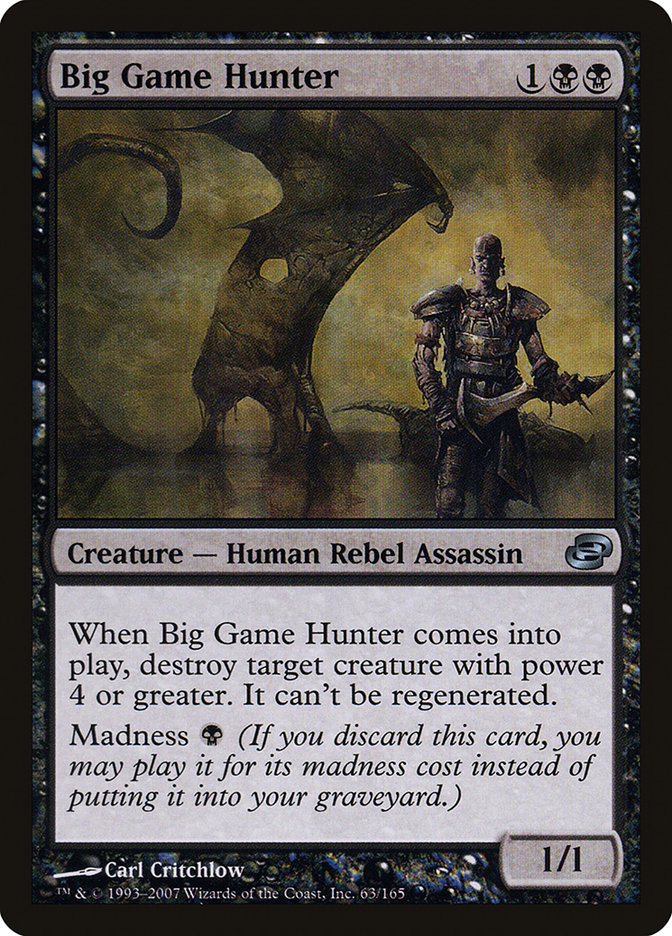#SCGNY is in the books. The owners of Dinosaur BBQ are now counting their stacks of cash and planning a well-earned vacation to Aruba and the collective LDL cholesterol level of the Magic community has risen several points.
But as we’re waiting in the doctor’s office for our check-ups we need something to do, and the choices are “read ten-year-old magazines,” “be the awkward adult playing with the children’s toys,” or “start preparing for the next tournament…”
All right, you can play with the blocks for ten minutes, but after that, let little Timmy and Julie have their turn, too.
(Tick, tock…)
Satisfied? Good, now let’s get down to some business.
The eventual talk of the tournament in Syracuse was Eldrazi Tron and for good reason: it took both finals slots and continued to look like the powerful Tier 1 option it has been for the last few months. But for much of Day 2, the buzz followed young Julian Grace-Martin and his innovative R/G Vengevine list, utilizing longtime Dredge enablers Faithless Looting, Cathartic Reunion, and Insolent Neonate to not only set up some 4/3 hasty Plants but also incredibly cheap Hollow Ones.
Julian looked poised for a deep run standing at 10-1, but a disappointing 0-4 end to the day led to a 34th place finish, dampening the excitement surrounding the deck as the top dogs took over. However, there’s a lot to like about what Julian’s list does, and Nick Miller graciously afforded us a first-hand look at the deck with a deck tech:
Creatures (25)
- 4 Street Wraith
- 3 Goblin Guide
- 4 Vengevine
- 2 Hooting Mandrills
- 4 Monastery Swiftspear
- 4 Insolent Neonate
- 4 Hollow One
Lands (18)
Spells (17)

It should come as no surprise that I’m a big fan of Vengevine after my year-long love affair with Dredge. I even sideboarded a package of Vengevine and Buried Alive in Legacy Elves back before Natural Order was a card. I’ve tried Dredgevine decks of all sorts in Modern over the years, but none have been successful. I want this to be the one that bucks the trend.
The way I see it, the core of the deck is the following 24 cards:
Without extensive testing, I wouldn’t touch any of these, since they are integral to the core of the deck. What I find so compelling about the core is how well the enablers connect Hollow One with Vengevine.
At their core, Vengevine decks are playing a critical mass of cheap creatures along with a critical mass of graveyard enablers in order to consistently cheat the 4/3 onto the battlefield. This can create a tension for space in the deck, but the velocity provided by the graveyard enablers let you find more cheap creatures than you would expect when only running seventeen.
The real issue comes from having a deck that is playing cheap, underpowered creatures with spells that don’t necessarily go well with those creatures. You rarely see Faithless Looting beside Goblin Guide even though they’re both good cards because Goblin Guide would rather be paired with heavy burn or pump spells.
As a result, the deck can fairly easily fold if the pieces of the Vengevine plan don’t come together, leaving you with an aggro deck that isn’t fast enough to get the job done in time. Hollow One is the first step in remedying this issue, giving you a sizable body on the cheap, easily costing one in this deck and often zero.
This means that not only are you more likely to recur Vengevine on turn two or three, you’re doing so with a card that is a substantial threat should your opponent have an answer for your plant. It also gives you aggressive draws that are degenerate without drawing Vengevine, at times putting eight or twelve power on the battlefield on turn 1 or 2.
And when you put them together, you get the following nut draw:
Cycle Street Wraith.
Faithless Looting, discarding two Vengevines.
Cast two Hollow Ones, recur the Vengevines, and attack for eight.
At that point you have lethal damage on turn 2 through a removal spell!
Now, we shouldn’t go around evaluating the strength of decks based on their absolute best draws, but it does show you what the deck is capable of, and that draw is far enough above what most other decks in Modern can do to be exciting. The deck generates a lot of turn 3 or 4 kills, some of which were seen on camera last weekend.
As for the rest of the list, Hooting Mandrills and Lightning Bolt are clear additions on power level alone, with Mandrills also serving as additional copies of Hollow One as a cheap creature to recur Vengevine that isn’t undersized. Of course, the diminishing returns on delve prevent you from playing a lot of copies, so two make sense to me.
We’re left with these twelve cards:
These fill out the deck and give it its overall strategy. This is an aggro-combo deck, which for Vengevine feels right at home. Monastery Swfitspear and Goblin Guide are among the best one-drops you can play and the deck needs plenty of them, while the pump spells let you go over the top of blockers or race combo decks.
This is a well-built, coherent deck and I applaud Julian’s ingenuity in building it, but with how flexible that 24-card core is, I have to wonder if we can do better.
Sticking with the aggro-combo shell, I think Julian’s list is close to optimal. The one card I’d consider is Wild Nacatl as a one-drop over some number of the haste creatures. As Julian notes in the deck tech, haste is important to enable a combo finish from no battlefield, but that doesn’t mean we have to limit ourselves to only haste creatures. Wild Nacatl is a lot more powerful than those two options and splashing a couple of white lands is quite easy. It also lets you sideboard things like Stony Silence and Path to Exile, which could help in a lot of matchups.
Creatures (25)
- 4 Street Wraith
- 4 Wild Nacatl
- 4 Vengevine
- 2 Hooting Mandrills
- 3 Monastery Swiftspear
- 4 Insolent Neonate
- 4 Hollow One
Lands (18)
Spells (17)

These are mostly cosmetic changes to a cohesive shell, so I’ll move on to more interesting directions to take this shell.
For the most part, my inspiration came from Julian’s losing streak at the end of the tournament, which, after some snooping around the pairings and results, looks to be from two copies of Eldrazi Tron, U/R Gifts Storm, and TitanShift.
Now, four matches make a small sample and these four decks were piloted by the two finalists, Caleb Scherer, and Collins Mullen, so the quality of pilots was very high, but it’s hard not to notice that all three of these decks can go over the top or race what the Vengevine deck is doing in all but its best draws.
Thus, I wanted to look for a way to get more generic disruption in the deck, and when it comes to generic disruption in Modern, you can’t beat Thoughtseize. Fortunately, I also wanted to take more advantage of the graveyard in a deck that has such powerful enablers for that zone and black is the perfect color for that.
This means shifting from a pure aggro-combo deck into a more disruptive shell, so the package that Julian uses is no longer appropriate. That led me on a search for more suitable one-mana creatures, and the immediate answer is Gravecrawler.
Gravecrawler plays perfectly with Vengevine because it works well with the same enablers and you actually cast it from the graveyard, so it still contributes to recurring the angry Plant. A few well-placed Gatherer searches and I arrived at the following list:
Creatures (27)
- 1 Big Game Hunter
- 4 Street Wraith
- 4 Vengevine
- 4 Gravecrawler
- 3 Gurmag Angler
- 4 Insolent Neonate
- 3 Dread Wanderer
- 4 Hollow One
Lands (18)
Spells (15)

I reluctantly moved the discard spells to the sideboard in order to keep the deck’s aggression high in Game 1, but they should still help the unfair matchups immensely. Notably, you gain access to Collective Brutality in addition to Thoughtseize, which works so well in this deck I could see it moving to the maindeck in some capacity, especially if your metagame is Burn-heavy.
Dread Wanderer takes the spot as an additional one-drop and gives you even more recurring potential, but its most important quality is in the type line. You need a fair number of Zombies to recur Gravecrawler consistently, and while Dread Wanderer and Gurmag Angler may leave the deck short in some games, I think, with the velocity it generates, it should be fine, so long as you play carefully and sometimes hold back a Gravecrawler if you don’t have another Zombie.
The most exciting addition to me is Big Game Hunter, which has been at the forefront of my mind since recording this hilarious Daily Digest. There aren’t a lot of quality madness cards in Modern but Big Game Hunter is great right now, taking out various Eldrazi, Death’s Shadow, and delve creatures while also being a cheap creature for Vengevine and a way to gain value from discard outlets. It does everything which is…you might say…a bi…
…I’m not going to say it.
Big Game Hunter could be good enough to trim on the removal spells in order to fit some discard into the maindeck, but it not being a Zombie makes it hard to cut other creatures for, so you’re not really generating extra space. I guess it doesn’t quite do everything, but it comes real close. If you want discard in the main, you probably get it by eschewing Lightning Bolt, the lone holdover from Julian’s aggro-combo package, and going up to four copies of Fatal Push as your maindeck removal.
My main qualm with this direction is that Gravecrawler and Dread Wanderer aren’t great as far as one-drops go. Savannah Lions isn’t what it used to be, and even with their recursion, I worry about getting outclassed in Modern. If only there was a great one-mana creature in black that plays really well with Thoughtseize and Street Wraith…
Hey, it’s me again. I’m still busted.
I think the best part of Death’s Shadow in this shell is that it’s a one-drop that doesn’t get cast until turn 2 or 3 anyway, making it line up perfectly with the turns you want to first recur Vengevine. The deck already plays plenty of fetchlands, so adding a shockland or two should be enough to make the entire thing work.
Creatures (26)
- 1 Big Game Hunter
- 4 Street Wraith
- 4 Death's Shadow
- 4 Vengevine
- 1 Bloodsoaked Champion
- 2 Gurmag Angler
- 1 Tasigur, the Golden Fang
- 1 Zurgo Bellstriker
- 4 Insolent Neonate
- 4 Hollow One
Lands (18)
Spells (16)

Unfortunately, with the upgrade to Death’s Shadow comes a downgrade on the other one-drops, since you no longer have enough Zombies to make Gravecrawler work. Bloodsoaked Champion does an okay Dread Wanderer impression and Zurgo Bellstriker is an intriguing option, since its dash lets you constantly keep a creature in your hand to recur Vengevine as the game goes long, which this list is poised to do more often than the others. Still, they are the first slots I would look to upgrade and tinker with.
Despite the gain in power from Death’s Shadow, I worry that this version of the deck could be moving too far away from what makes the deck different, slowing it down to the point where you give Snapcaster Mage and Fatal Push time to do their thing. That’s certainly possible, but I like that this deck is likely to get full use out of Faithless Looting and Vengevine has always been at its best in longer games where your opponent futilely tries to answer it with removal spells.
It may not be as naturally or obviously prone to attrition as Snapcaster Mage and company, but after years of Tireless Tracker and Courser of Kruphix, I think we all understand how powerful green’s brand of card advantage can be.
Hour of Devastation has yet to make a significant impact in Modern, as is typical, but Hollow One looks like it might be one of the sleeper cards in the set given how the larger formats have the appropriate enablers for it. Also, Vengevine is too powerful of a card to be held in check for this long. It’s time for hasty Plants to make a comeback.



